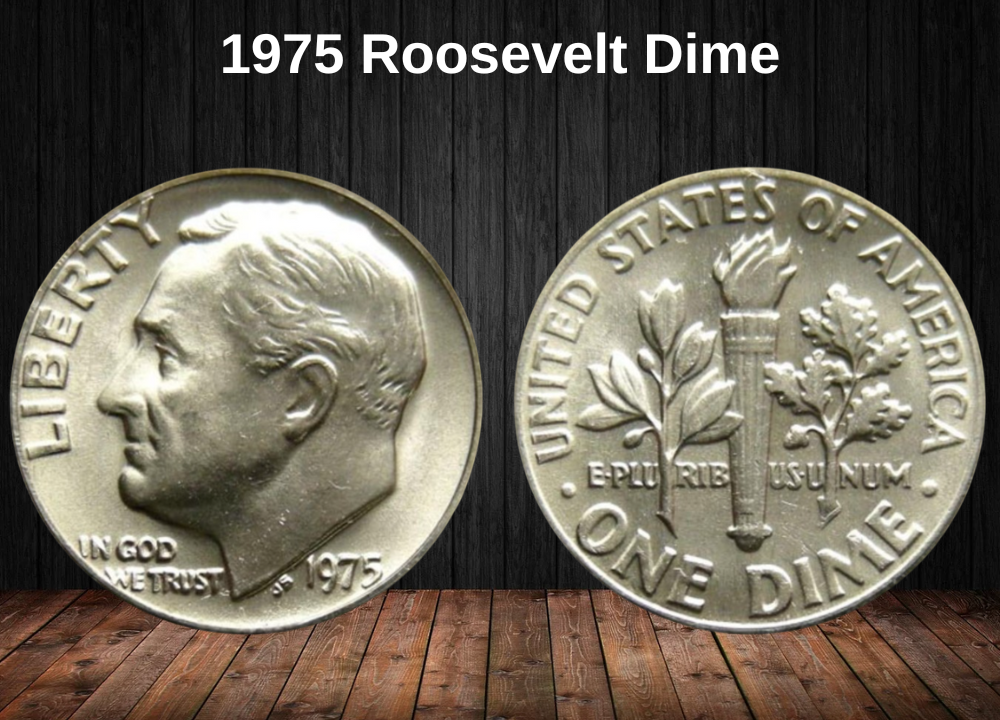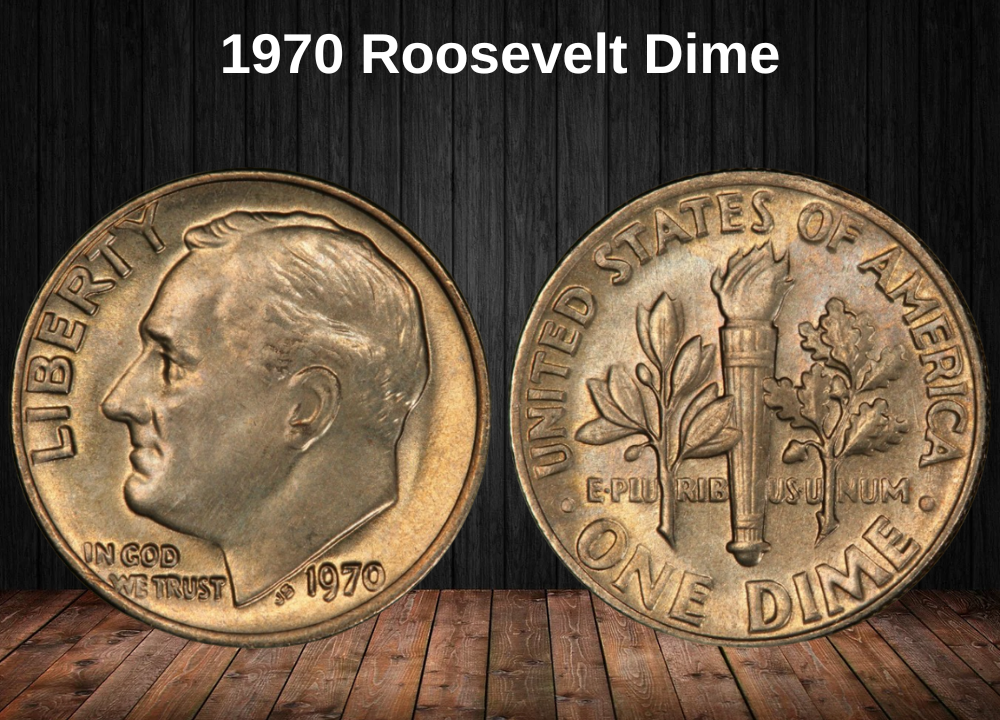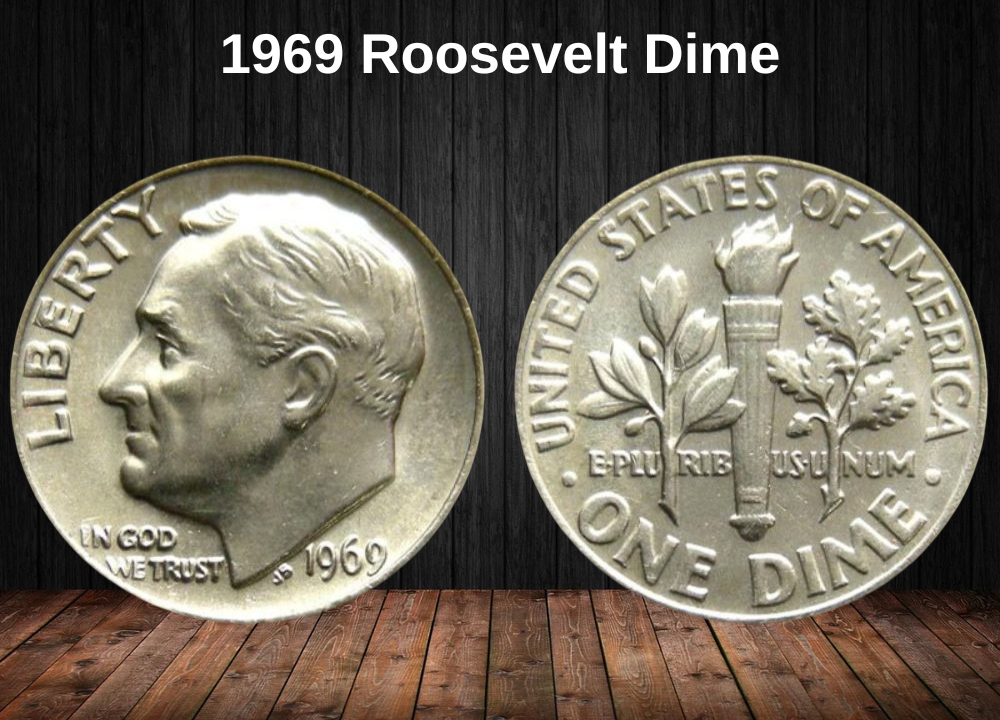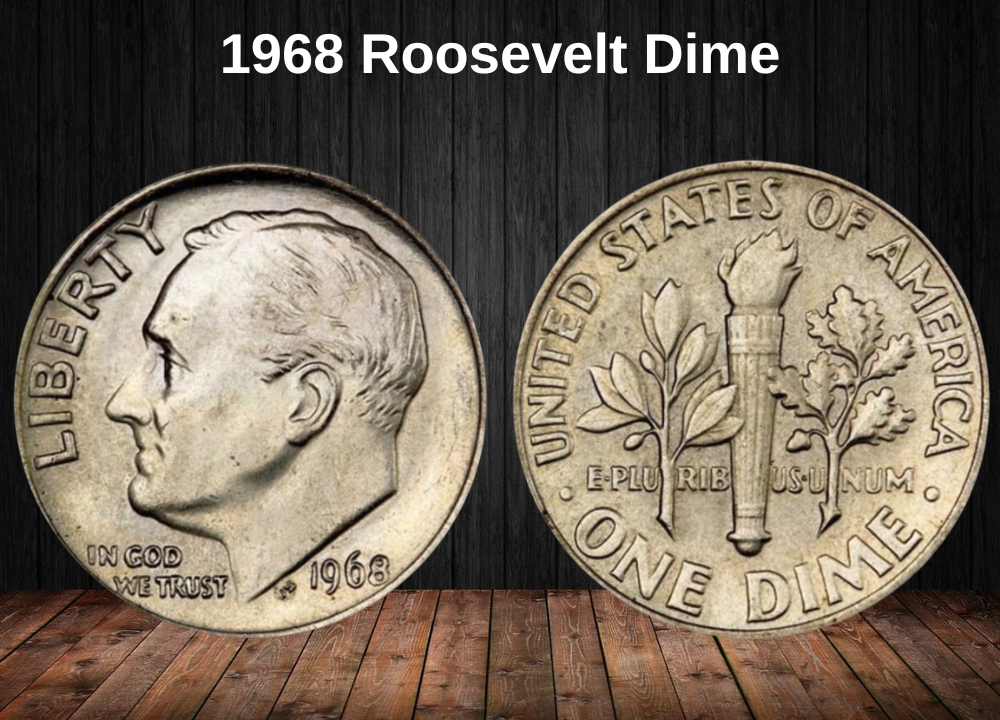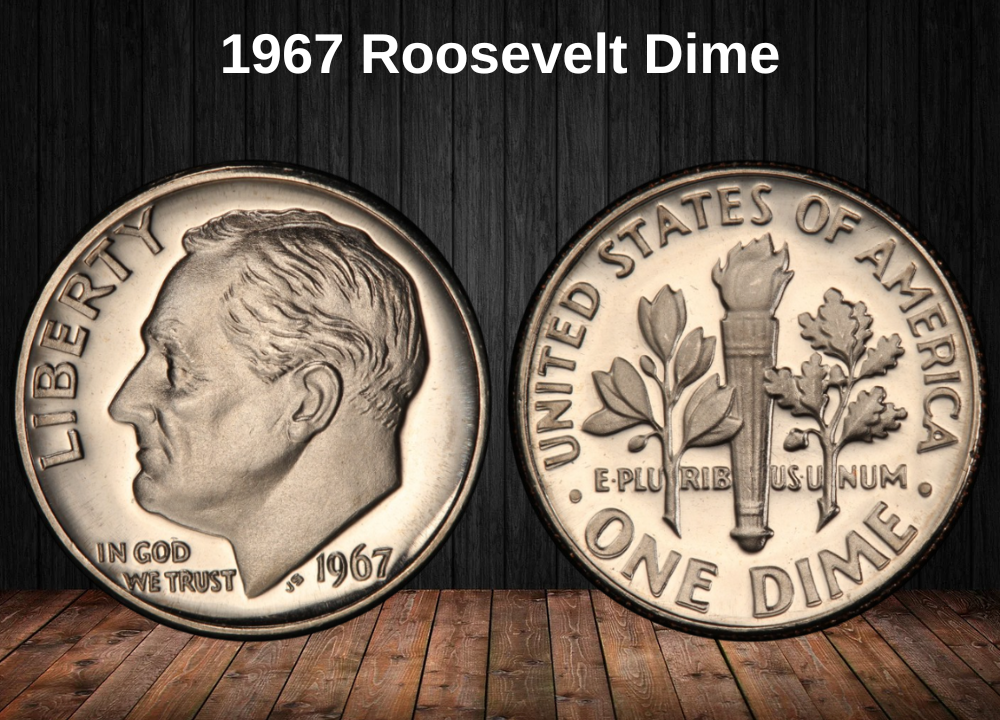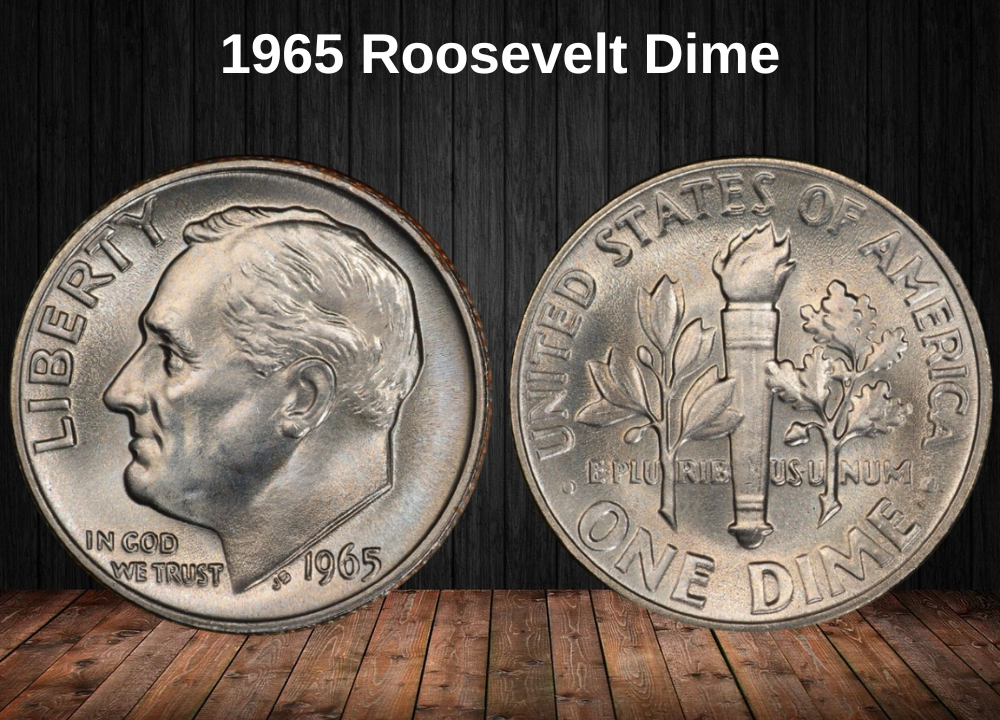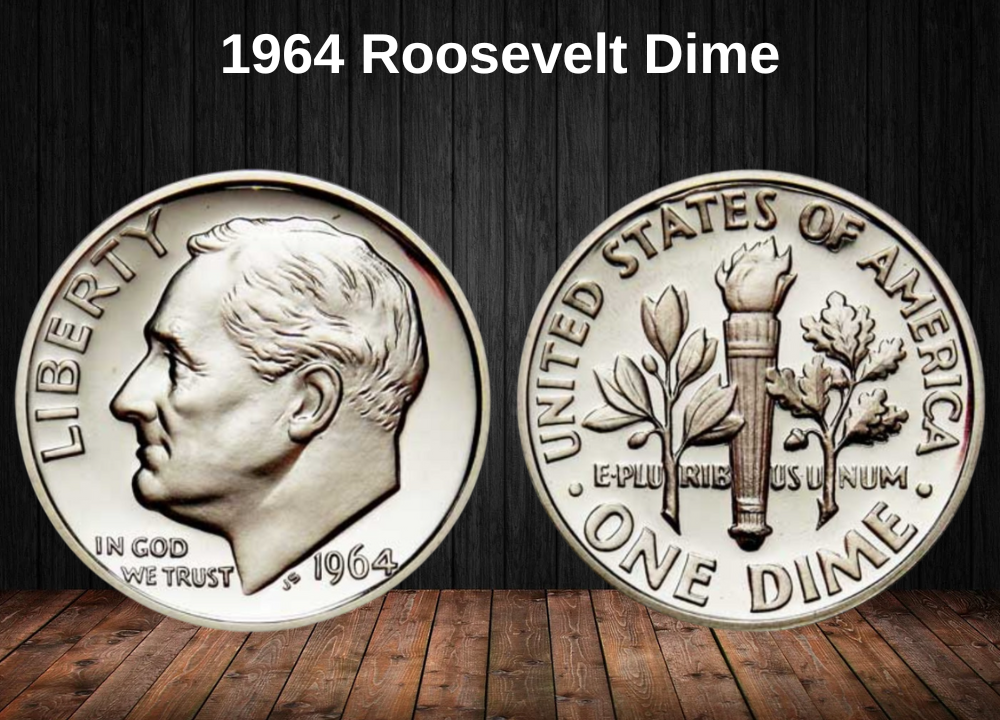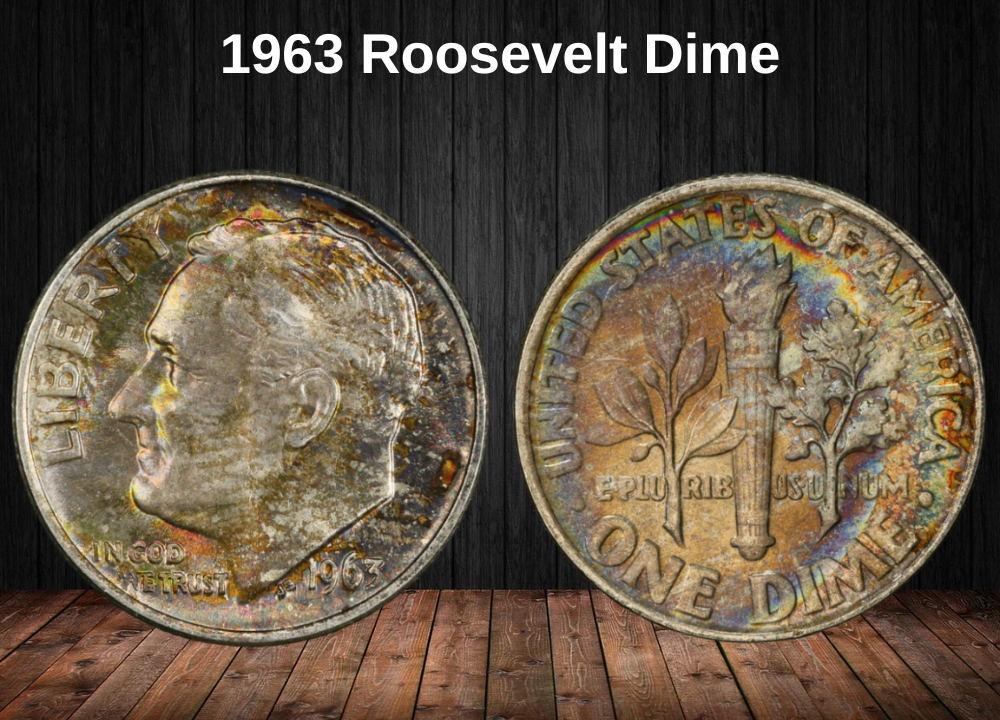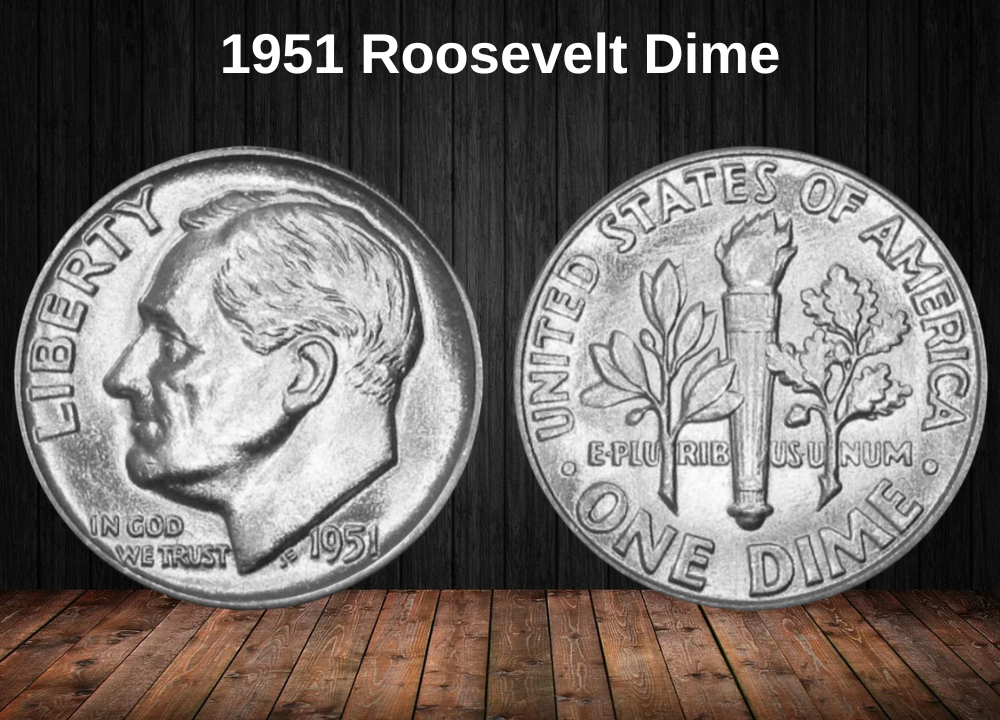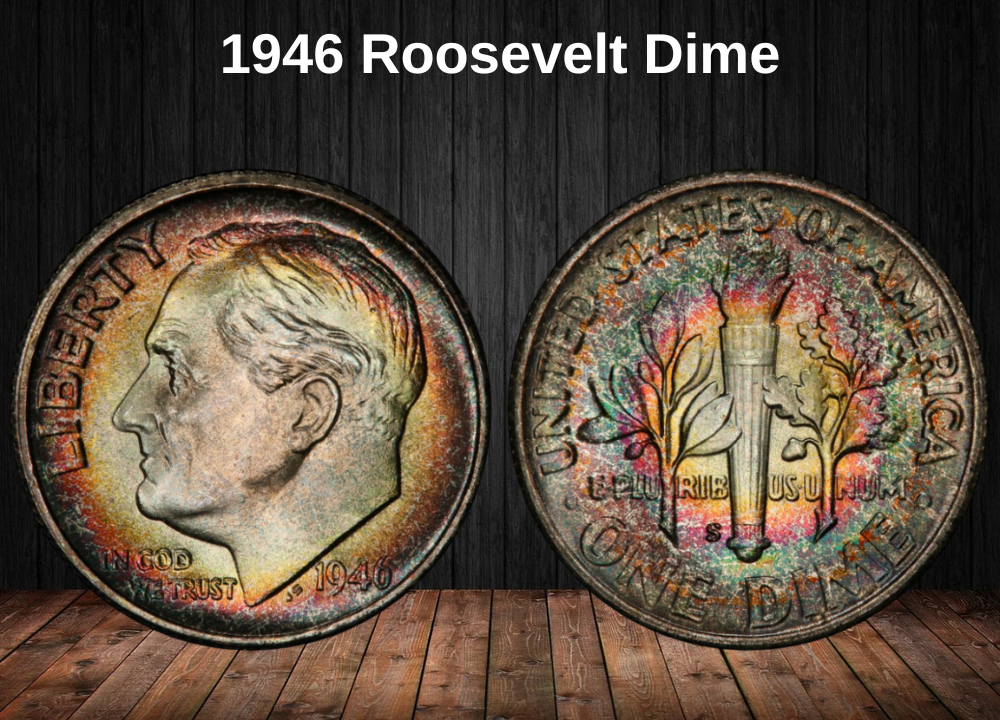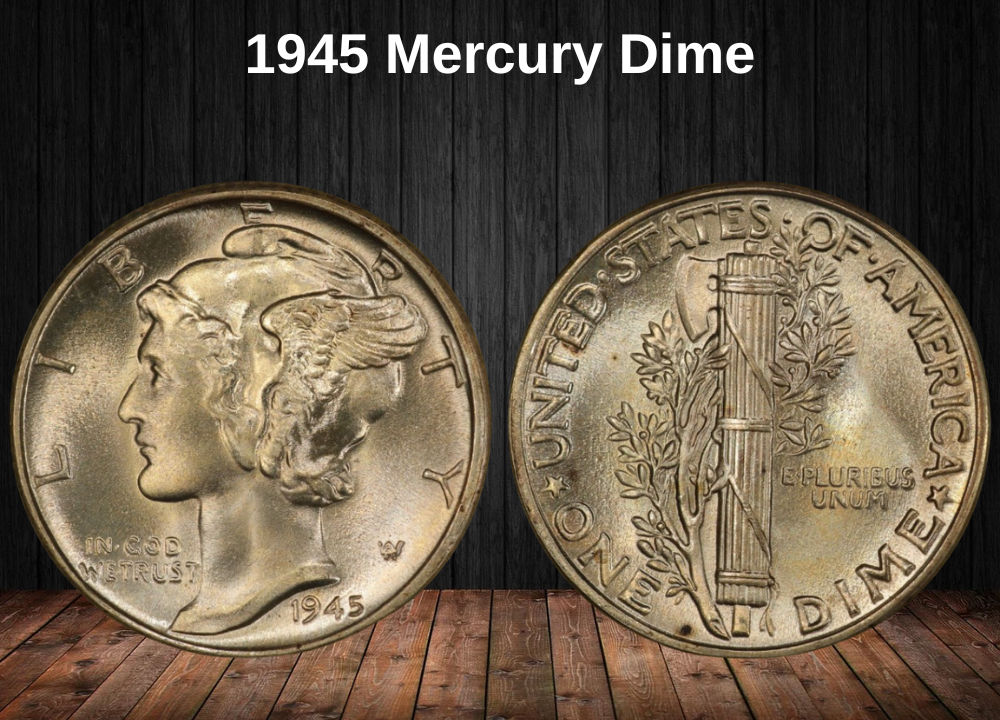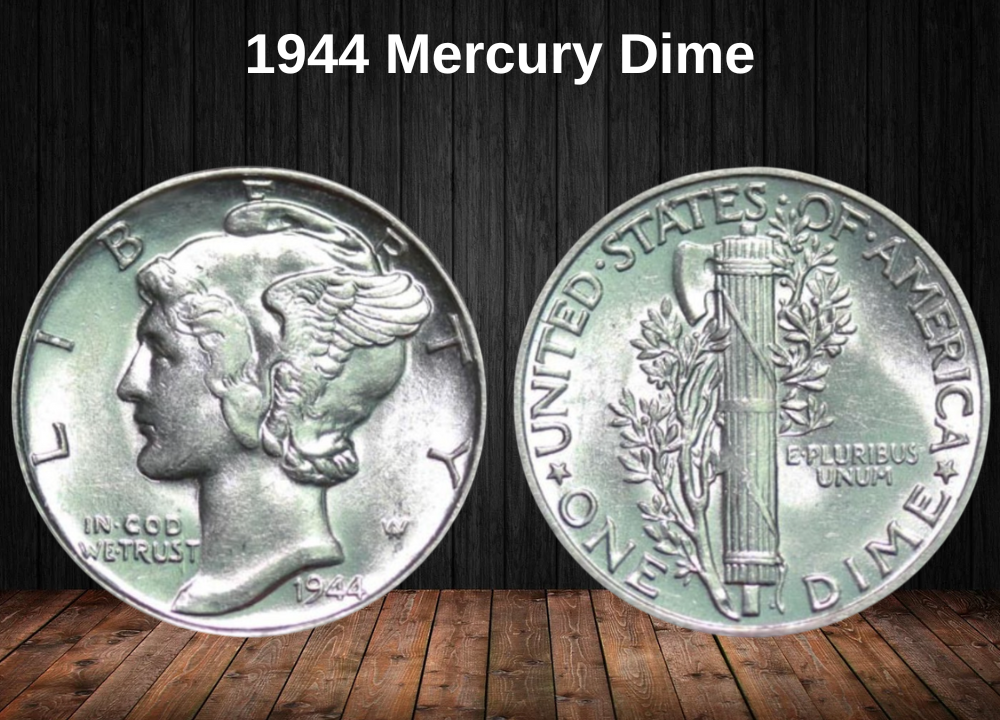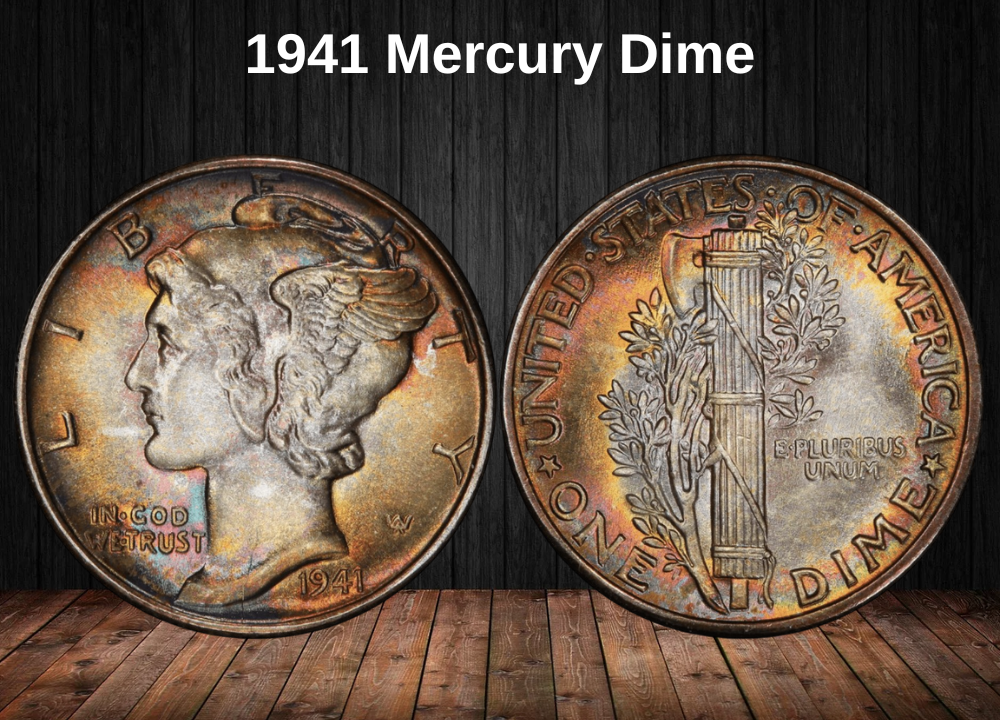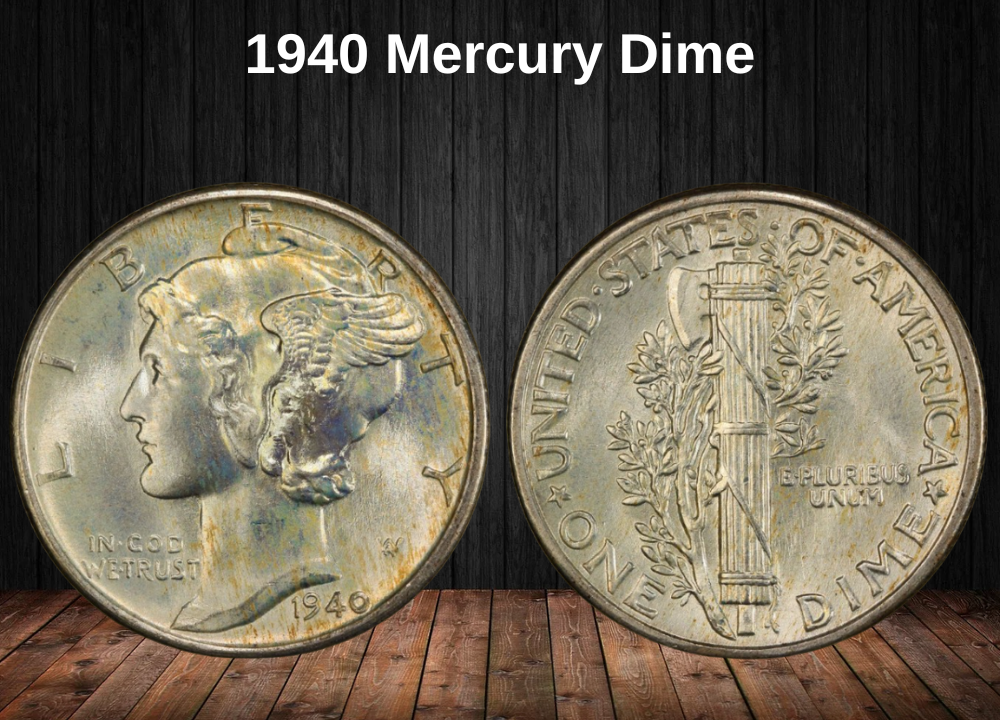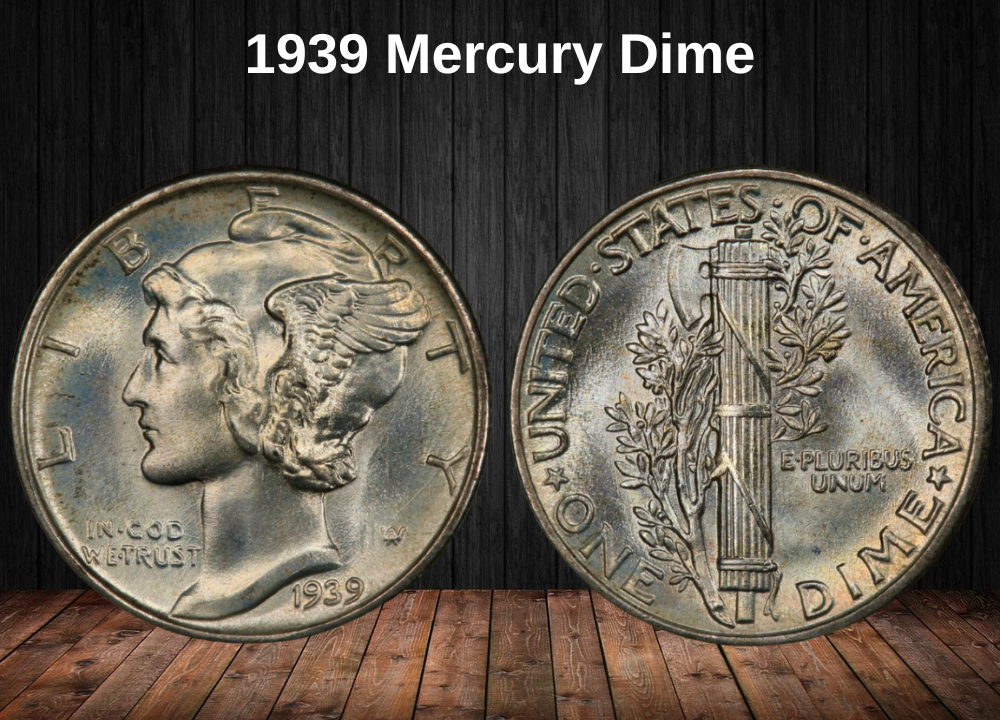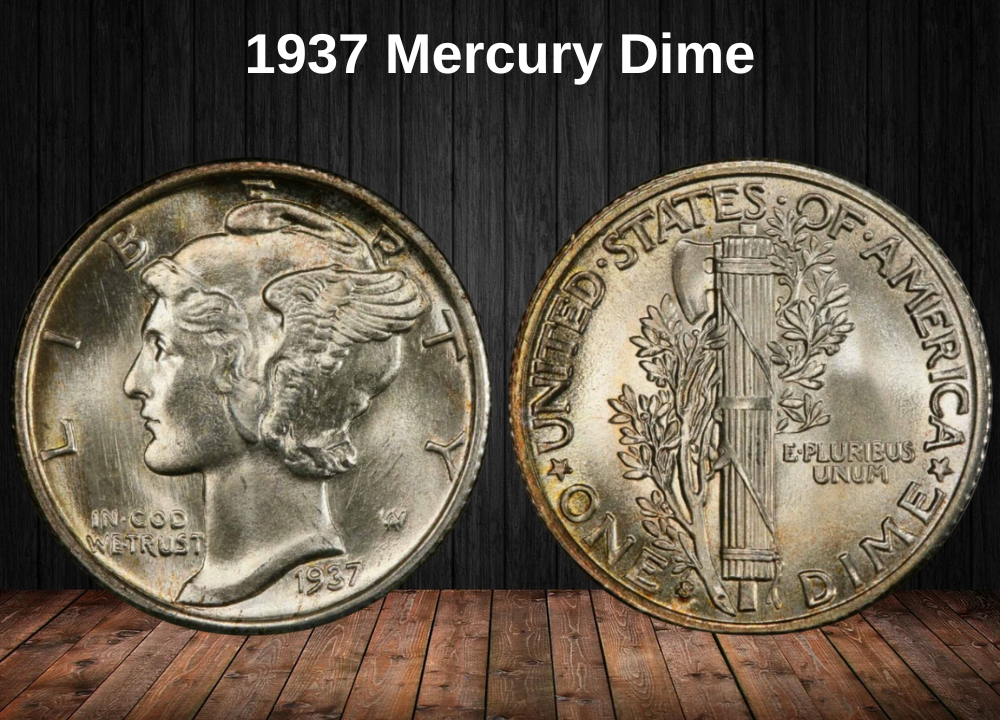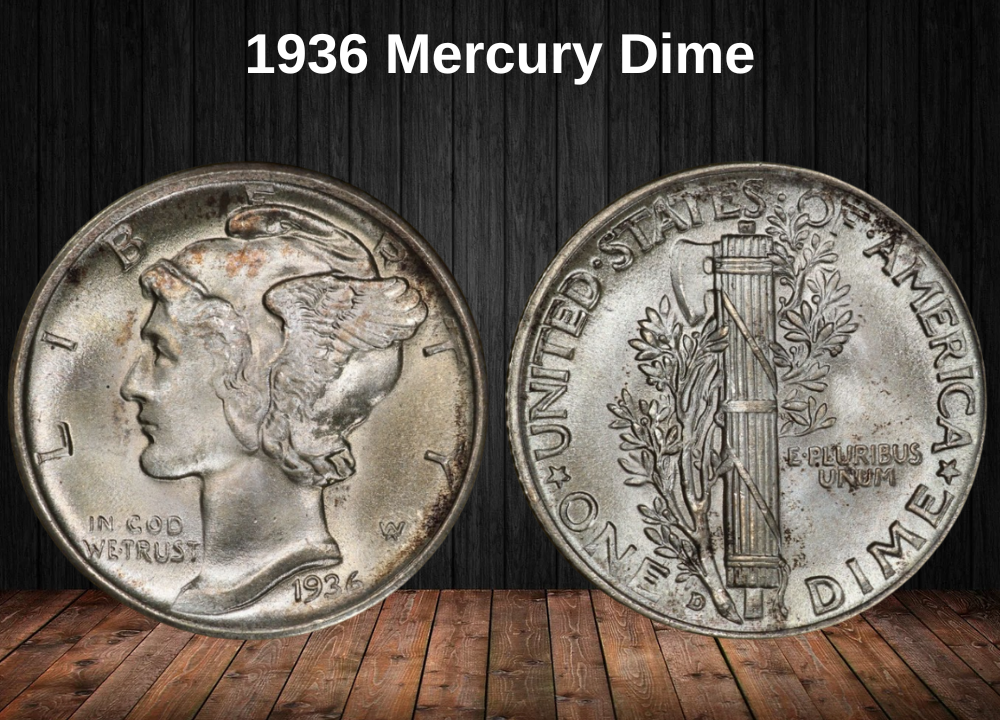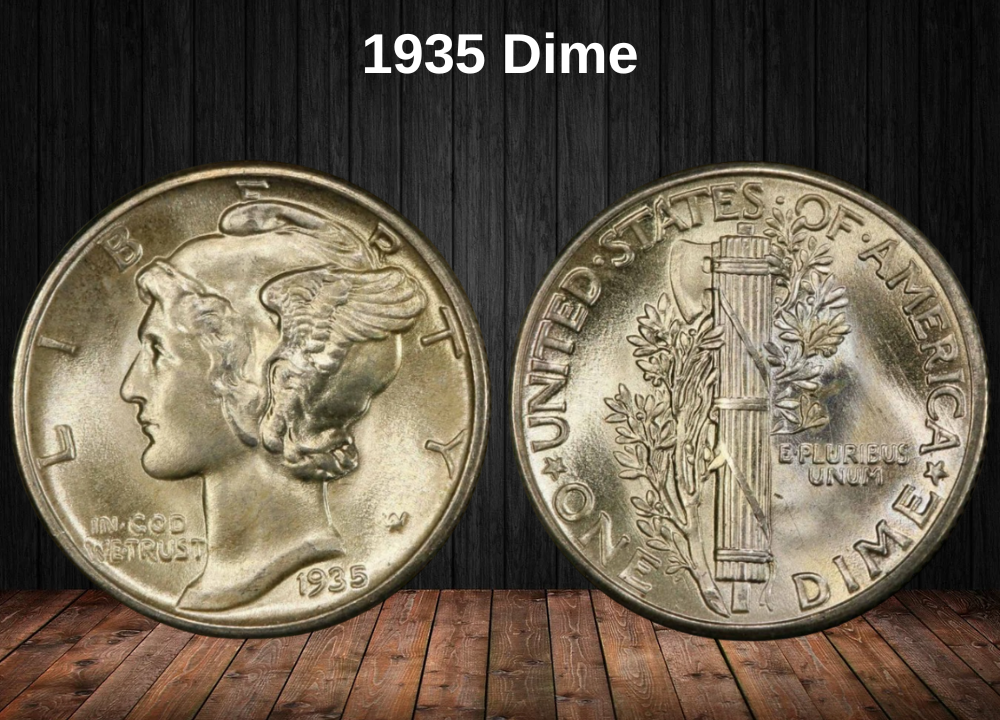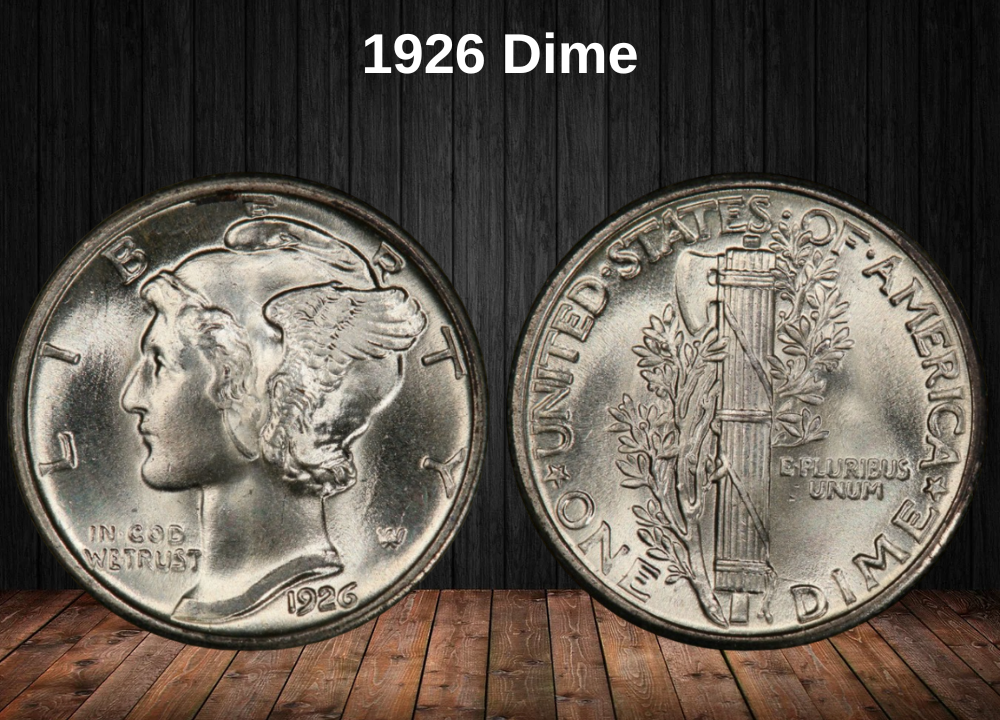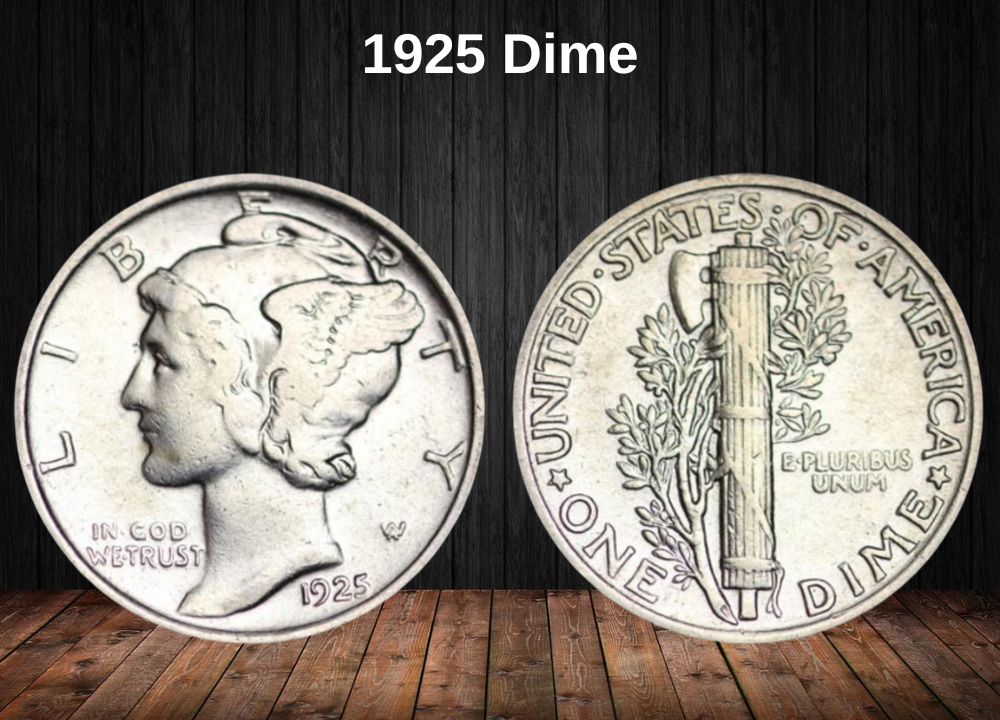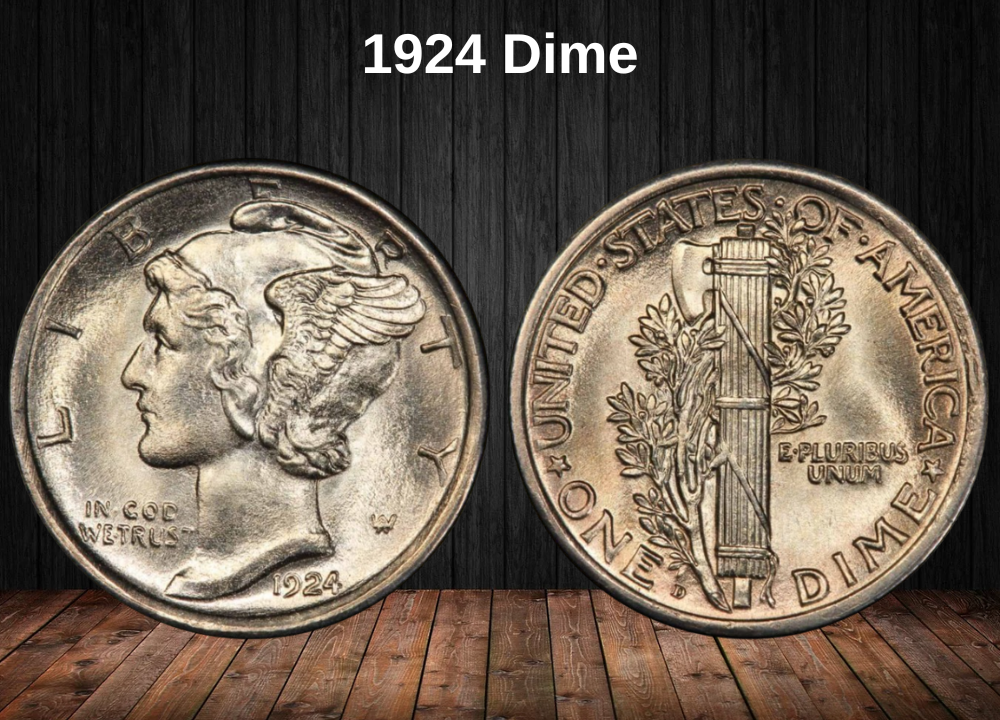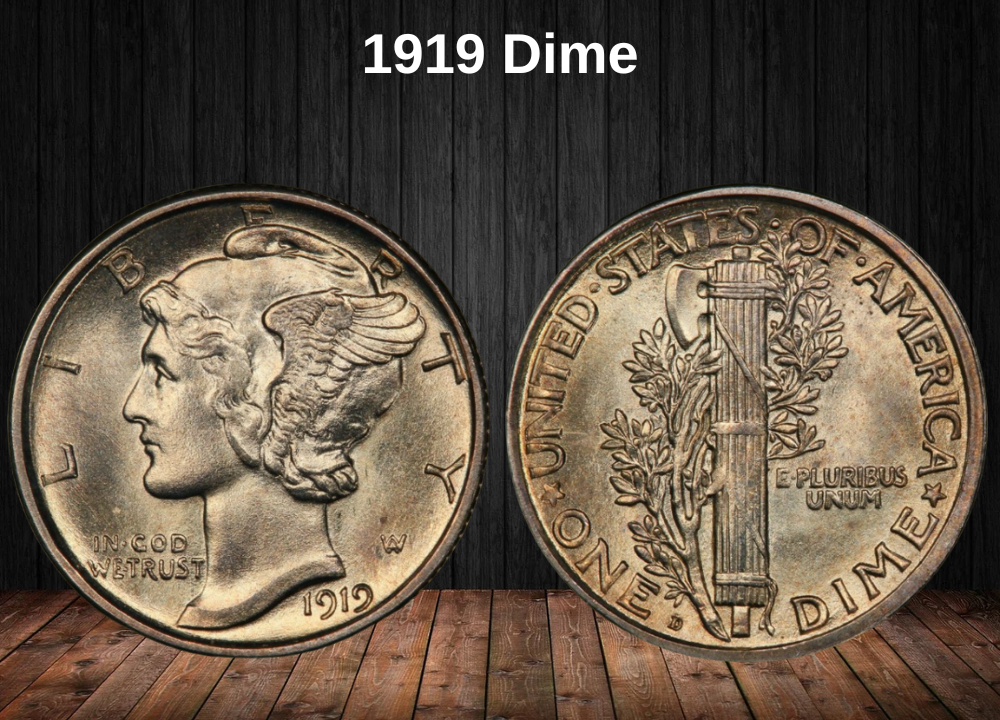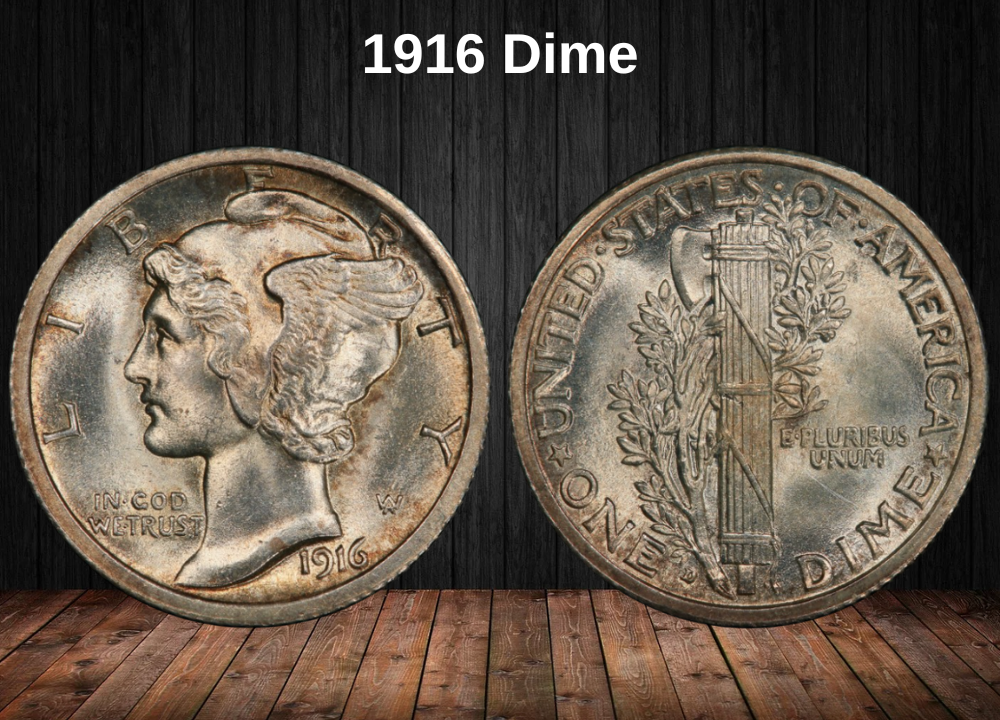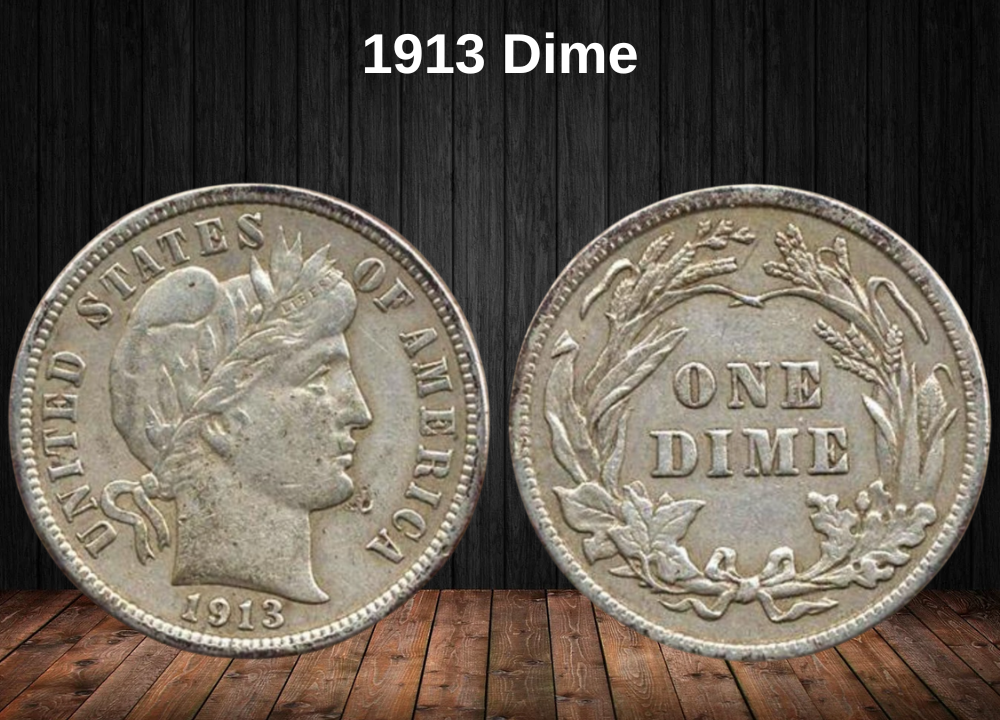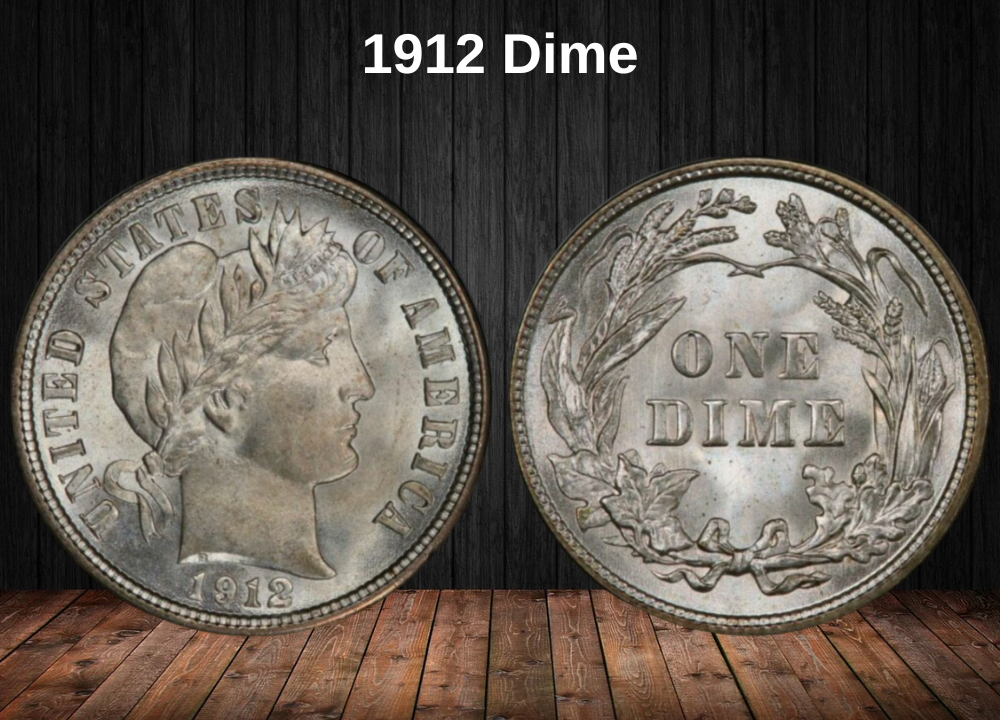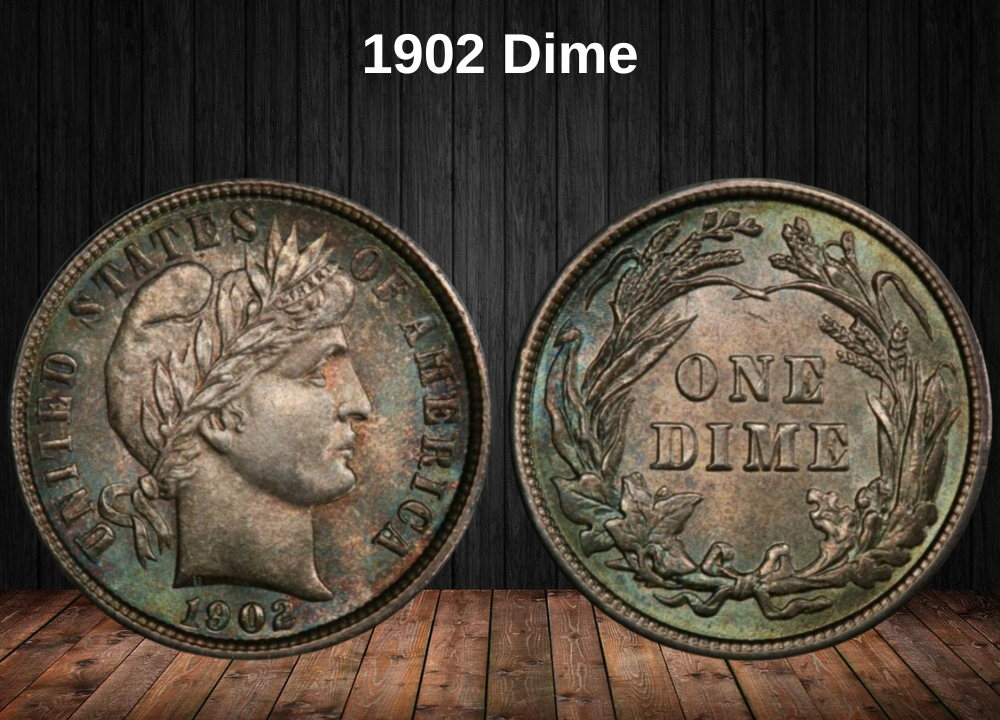Collectors and investors often keep silver coins like the 1961 Roosevelt dime because of their intrinsic silver content. But beyond bullion value, this dime holds numismatic interest as one of the last silver dimes before the clad coinage era.
The year 1961 falls right at the beginning of the U.S. coin shortage of the 1960s, making these coins widely hoarded in their time. Let’s break down their value by type and condition.
1961 Dime Value Charts (Regular Strike)
| Coin | MS 65 | MS 66 | MS 66+ | MS 67 | MS 67+ | MS 68 |
|---|---|---|---|---|---|---|
| 1961-D Dime | $18 | $22 | $38 | $150 | $225 | – |
| 1961-D Dime (Full Bands) | $28 | $42 | $90 | $450 | $1,250 | $10,000 |
| 1961 No Mint Mark Dime | $18 | $20 | $26 | $75 | $350 | – |
| 1961 No Mint Mark Dime (Full Bands) | $20 | $150 | $325 | $950 | $4,000 | – |
Key Takeaway: The real premiums come with Full Bands strikes, especially in MS 67 and above.
1961 Dime Value Charts (Proof Coins)
Philadelphia also struck over 3 million proof coins in 1961, all without mint marks. These carry additional value depending on whether they display cameo or deep cameo contrast.
| Coin | PR 60 | PR 62 | PR 64 | PR 66 | PR 68 | PR 69 | PR 70 |
|---|---|---|---|---|---|---|---|
| 1961 Proof No Mint Mark Dime | $4 | $6 | $10 | $12 | $18 | $38 | $275 |
| 1961 Proof No Mint Mark Dime (Cameo) | $6 | $8 | $14 | $18 | $26 | $80 | – |
| 1961 Proof No Mint Mark Dime (Deep Cameo) | $7 | $10 | $15 | $30 | $140 | $375 | $5,750 |
Key Takeaway: A 1961 Proof Deep Cameo graded PR 70 can reach over $5,000, making it one of the most valuable coins of the year.
History of the 1961 Dime
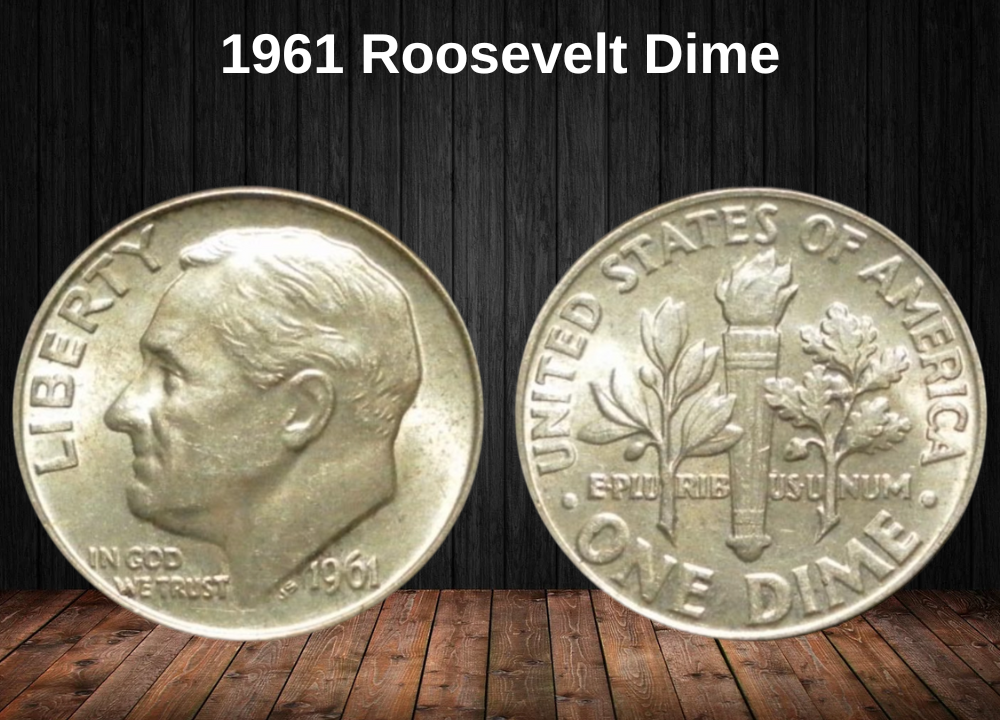
At 17.91mm in diameter and 1.35mm thick, the Roosevelt dime is the smallest and thinnest circulating U.S. coin. Before the dime, the smallest denomination in silver was the three-cent silver coin (trime), struck between 1851 and 1873, measuring only 14mm across and 0.6mm thick. Both coins were kept small because they were composed of 90% silver and 10% copper, and the U.S. Mint wanted to make sure their intrinsic value (melt value) stayed well below face value.
The silver three-cent coin was discontinued soon after the nickel five-cent piece was introduced. After that, the dime became the lowest-value circulating U.S. coin made of silver, until silver was removed from coinage in the mid-1960s.
Introducing Cupronickel to the Dime
In the late 19th century, the Mint experimented with cupronickel alloys (75% copper, 25% nickel) for the three-cent and five-cent pieces. This metal was durable, long-lasting, and resembled silver, but was much cheaper. However, the dime retained its silver composition until the coin shortage of the early 1960s. Rising silver prices threatened the economy, so the Mint switched to the so-called “Johnson Sandwich” in 1965, under President Lyndon B. Johnson.
This new clad design layered cupronickel over a pure copper core, creating the modern dime still in circulation today.
The 1961 dime sits at the crossroads of this change, marking one of the final years of true silver dimes. It also gained extra collector attention because of popular minting errors such as the Doubled-Die Reverse (DDR), which significantly increase value in the numismatic market.
The Importance of the Roosevelt Dime
The Roosevelt dime was first issued in 1946, one year after President Franklin Delano Roosevelt’s death, to honor his memory. Roosevelt, who contracted polio in 1921, spent much of his life paralyzed from the waist down, though he rarely showed this in public. Despite this, he became the only U.S. president elected to four terms, leading the nation through the Great Depression and most of World War II.
Roosevelt was deeply associated with the fight against polio, founding the Georgia Warm Springs Foundation in 1927. This evolved into the National Foundation for Infantile Paralysis in 1938, which later became the March of Dimes. The name “March of Dimes” was coined by radio host Eddie Cantor, inspired by the newsreel series The March of Time, and encouraged citizens to donate a dime to support polio research.
When Roosevelt passed away in 1945, placing his portrait on the dime created a permanent tribute, forever linking him to the cause. The coin was released on January 30, 1946, what would have been FDR’s 64th birthday, just one week after the 8th anniversary of the March of Dimes campaign.
Thus, every Roosevelt dime—like the 1961 issue—serves as both currency and commemoration, symbolizing the legacy of FDR and the enduring fight against polio.
Features of the 1961 Dime
In numismatics, a few technical terms are key: the front (heads) side of a coin is called the obverse, the back (tails) side is the reverse, and the thin boundary is the edge. The raised border is known as the rim or retaining collar.
The inscriptions stamped on a coin are called legends or mottos, while portraits and images are referred to as devices. The flat background of a coin is called the field. Each coin begins as a blank disc known as a planchet, and ridges along the edge—called reeds—were historically used to prevent shaving silver from coins and to deter counterfeiting.
The Obverse of the 1961 Dime
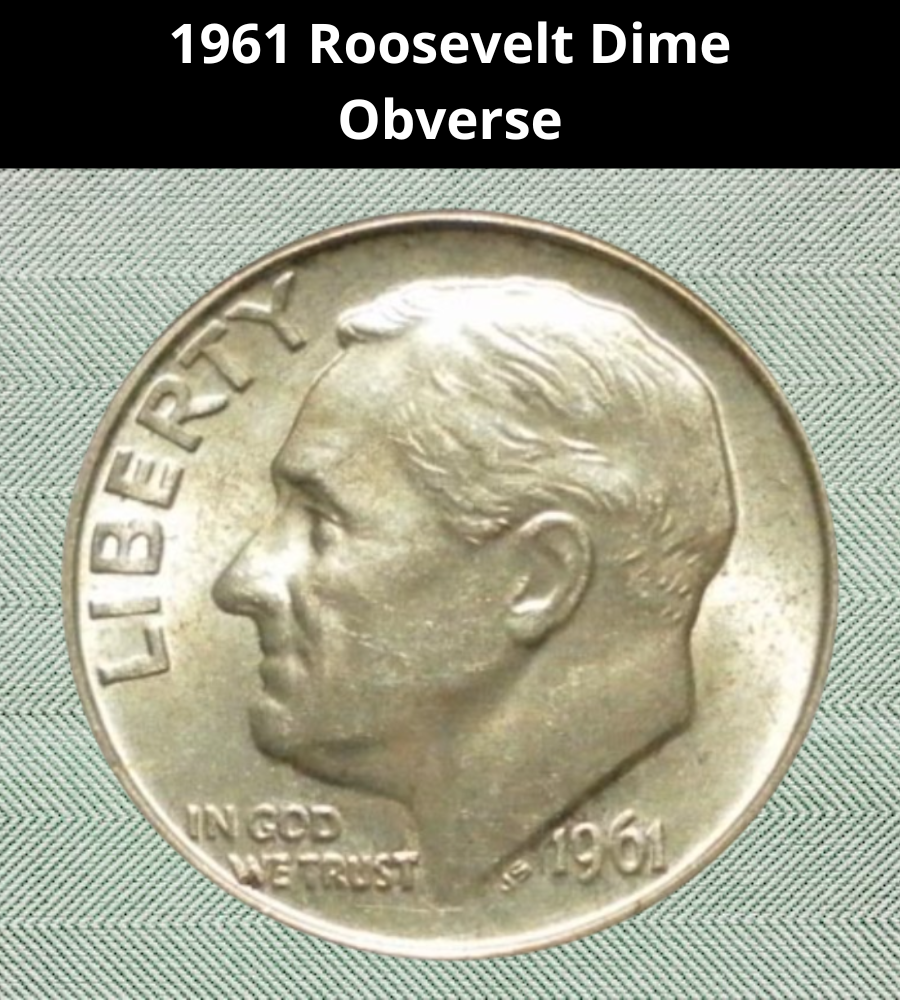
The obverse features a left-facing bust of Franklin Delano Roosevelt, honoring the 32nd U.S. President. Around the design are the following inscriptions:
- LIBERTY appears along the left rim, in front of Roosevelt’s forehead.
- IN GOD WE TRUST is placed in smaller letters at the base of the neck.
- The designer’s initials, JS (John R. Sinnock, 8th Chief Engraver of the U.S. Mint), are positioned behind Roosevelt’s neck.
- The date of issue, 1961, follows the initials, completing the design.
Although Sinnock is credited as the designer, much of the engraving work was executed by his assistant, Gilroy Roberts, due to Sinnock’s poor health.
The Reverse of the 1961 Dime

The reverse presents a combination of symbols representing America’s resilience and values:
- A central torch symbolizes liberty.
- An olive branch on the left signifies peace.
- An oak branch on the right represents strength and victory.
- The motto E·PLURIBUS·UNUM is inscribed across the branches and torch.
Around the rim appear:
- UNITED STATES OF AMERICA at the top.
- ONE DIME at the bottom.
- The mint mark (when present) is located to the lower left of the torch’s base.
1961 Dime Specifications
| Detail | Specification |
|---|---|
| Face Value | $0.10 (Ten Cents) |
| Shape | Round |
| Edge | Reeded (118 reeds) |
| Diameter | 17.91 mm (0.705 in) |
| Thickness | 1.35 mm (0.053 in) |
| Weight | 2.50 g (0.080 troy oz) |
| Composition | 90% Silver, 10% Copper |
| Silver Content | 2.25 g (0.072 troy oz) |
1961 Dime Grading Guides
| # | Grade |
|---|---|
| 1 | Basal State-1 |
| 2 | Fair |
| 3 | Very Fair |
| 4, 5, 6 | Good |
| 7, 8, 10 | Very Good |
| 12, 15 | Fine |
| 20, 30 | Very Fine |
| 40 | Extremely Fine |
| 50 | About Uncirculated |
| 60 | Mint State |
| 65 | Mint State |
| 70 | Mint State |
1961 Dime Value Guides
In 1961, Roosevelt Dimes were struck at two U.S. Mints:
- Philadelphia (no mint mark) → produced both circulation strikes and proof coins.
- Denver (“D” mint mark) → produced circulation strikes only.
The regular issues were business strikes, made for everyday use, while the specially polished dies and planchets were used for proofs, aimed at collectors. Another key designation is FB (Full Bands) or FT (Full Torch), referring to the sharpness and clarity of the torch’s horizontal bands. Coins with this designation are significantly more valuable due to their scarcity.
1961-D Dime Value
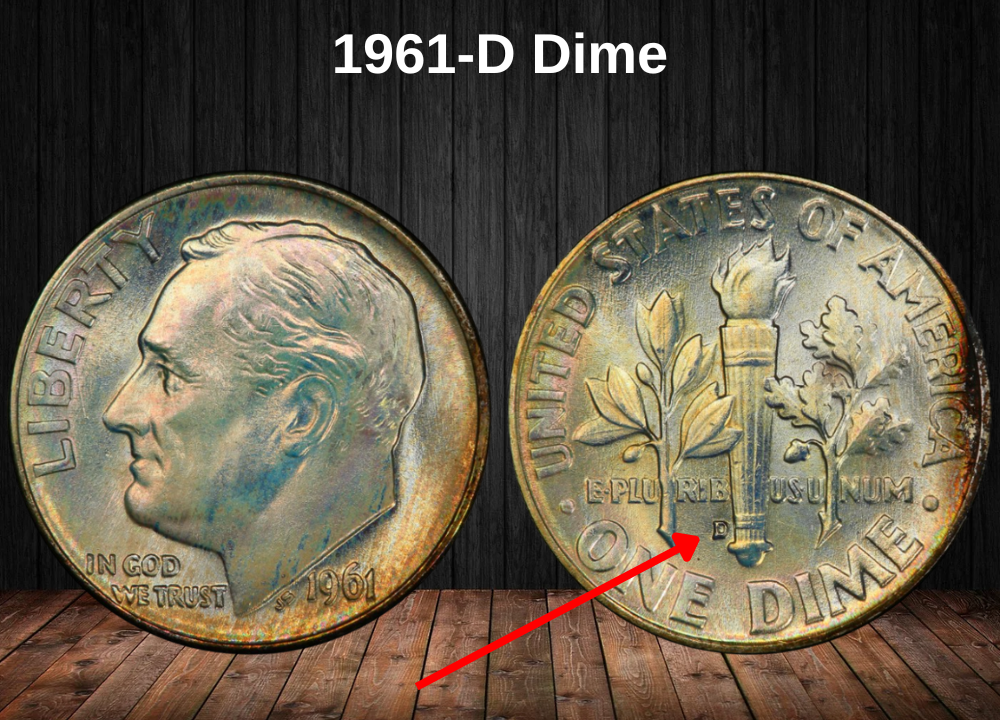
The Denver Mint struck a massive 209,146,550 dimes in 1961, each carrying the “D” mint mark to the left of the torch.
- An NGC-graded MS 68 sold for $1,610 in September 2009.
- Two MS 68+ examples sold for $1,456 (Oct 2021) and $780 (Nov 2022).
- The highest grade PCGS has verified is MS 67+, with eleven examples valued at $225 (May 2025).
More common grades:
- MS 66 → $22
- MS 67 → $150
Full Bands examples command large premiums:
- An MS 67+ FB sold for $5,288 (Nov 2012).
- PCGS has graded eleven, valued at $1,250 (May 2025).
- The finest known is a unique MS 68 FB, currently worth $10,000.
1961 No Mint Mark Dime Value

The Philadelphia Mint struck 93,730,000 business strike dimes in 1961, all without mint marks.
- An MS 67 sold for $550 (Feb 2022, eBay), but with over 70 known, its value is now $75.
- Only two MS 67+ coins exist, worth about $350 (May 2025).
Full Bands varieties are far scarcer and more valuable:
- An MS 67+ FB sold for $3,400 (May 2020).
- Only three are known to PCGS, estimated at $4,000 (May 2025).
- An MS 68 FB is known, but no public sales exist.
- MS 67 FB examples sell for around $950 (Oct 2023), with twelve graded.
- MS 66 FB → drops to $150, since nearly 100 have been graded.
1961 Proof No Mint Mark Dime Value

Since the San Francisco Mint closed in 1955, all proofs were struck at Philadelphia. In 1961, 3,028,244 proof dimes were made, all without mint marks.
These coins were produced using specially polished dies and planchets:
- The fields had a mirror-like surface.
- The devices were frosted by acid-pickling dies, later brushed with horsehair.
- The strongest contrasts came from the first 50–100 strikes, producing Deep Cameo (DCAM/Ultra Cameo) proofs.
- The next 50–100 showed lesser contrast and were classified as Cameo proofs.
Auction Highlights:
- A PR 65 sold for $396 (2014, eBay).
- A PR 69 CAM brought $213 (2014).
- A PR 70 DCAM fetched $5,581 (2014), and is now worth about $5,750 (May 2025).
Today, typical proof values range:
- PR 60–65 → $4–$12
- PR 68–69 → $18–$38
- PR 70 DCAM → up to $5,750
Rare 1961 Dime Errors List
Because the minting press can produce hundreds of coins per minute, mistakes are inevitable. These errors not only make coins unique but can also raise their value considerably among collectors. Early mistakes, discovered within the first 30 days of release, are called FS (First Strike) errors and are usually the most valuable.
Among 1961 Roosevelt Dimes, the FS-801 Doubled Die Reverse (DDR) is one of the most famous. Let’s explore some of the key error varieties.
1961-D Dime DDR (FS-801)

The doubled-die reverse happens when the die shifts slightly during hubbing, causing the second impression to misalign. This creates a subtle “double vision” effect on the reverse design, which is then transferred to every coin struck by that die.
- An MS 65 DDR sold for $125 (Aug 2019, eBay).
- By October 2023, an MS 66 DDR was valued around $275.
This remains one of the most desirable 1961 Dime errors.
1961 (P) Dime Struck on an Elliptical Planchet
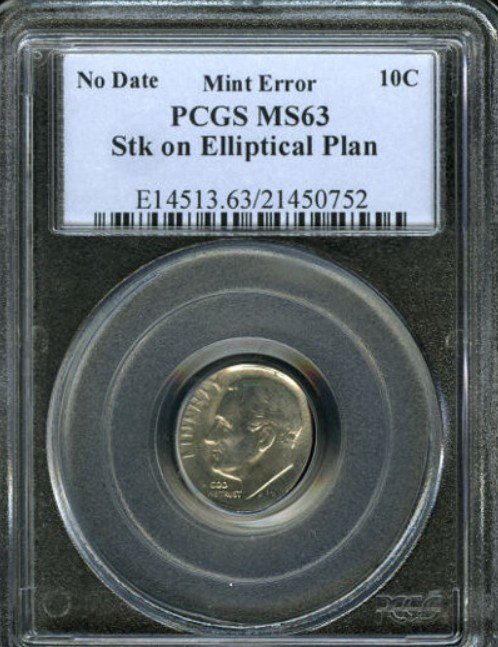
Planchets (coin blanks) are punched from coiled metal sheets. Sometimes, the blanking machine produces discs that are misshapen instead of perfectly round. When such an elliptical planchet is struck, the coin takes on a distinctive oval shape.
- An MS 66 FT (Full Torch) example, graded by NGC, sold for $260+.
1961-D Dime Curved Clip Error
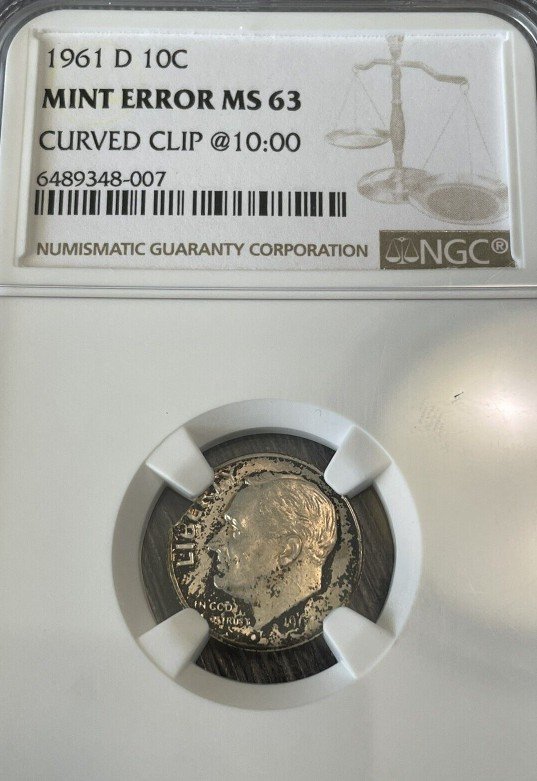
During planchet punching, leftover metal sheets full of holes are normally recycled. But occasionally, a blank is cut near the edge of one of these holes, creating a curved clip. If cut along the border of the sheet, it results in a straight clip instead.
- A curved clip 1961-D Dime, graded MS 64, sold for $20.
Although common compared to DDRs, clip errors are popular entry-level collectibles.
1961 (P) Dime Lamination Error

A lamination error occurs when the planchet has internal flaws, such as impurities or improper alloy bonding. When struck, parts of the metal surface peel, crack, or separate, sometimes exposing the copper beneath the silver layer.
- A 1961 lamination dime graded AU 58 sold for about $32.
Depending on the severity, lamination flaws can range from minor cracks to dramatic peels, making each coin visually unique.
Where to Sell Your Dime Coin?
Now that you know the value of your dime, the next step is deciding where to sell it. There are several trusted options—both online and in person—that can help you get the best price depending on your coin’s rarity and condition.
To see the full list of recommended places, along with their advantages and disadvantages, check our complete guide on where to sell your dime coins.
FAQ about the 1961 Roosevelt Dime
1. What is the 1961 Roosevelt Dime made of?
The 1961 Dime is composed of 90% silver and 10% copper, weighing 2.5 grams with a diameter of 17.9 mm.
2. Where were 1961 Roosevelt Dimes minted?
They were struck at the Philadelphia (no mint mark) and Denver (D) Mints. Philadelphia also produced proof coins in 1961.
3. Does the 1961 Dime have silver?
Yes. Every 1961 Roosevelt Dime contains 0.0723 troy ounces of silver, giving it a melt value that fluctuates with silver prices.
4. How can you tell if your 1961 Dime is valuable?
Condition and strike quality matter most. Coins graded MS 67 or higher and those with Full Bands (FB/FT) on the torch are the most valuable. Proofs with Cameo or Deep Cameo contrasts are also highly collectible.
5. What are Full Bands (FB) or Full Torch (FT) dimes?
This refers to a sharp, clear strike where the horizontal bands on the torch’s handle are fully separated. FB/FT dimes are rarer and command higher premiums.
6. Are there any errors on 1961 Roosevelt Dimes?
Yes. Some popular errors include the FS-801 Doubled Die Reverse (DDR), curved clip planchets, lamination flaws, and coins struck on elliptical planchets. These can significantly increase value.
7. How much is a 1961 Roosevelt Dime worth today?
- Circulated examples are worth at least their silver melt value (around $2+ depending on silver).
- Regular mint state (MS 65) coins are worth $18–$22.
- High-grade Full Bands examples can reach $10,000 or more.
- Proof Deep Cameo coins in PR 70 have sold for over $5,500.
8. Why do some 1961 Dimes sell for thousands of dollars?
It depends on rarity, grade, strike quality, and errors. For example, a single MS 68 FB dime or a Deep Cameo Proof in PR 70 can fetch thousands because so few exist in that condition.


